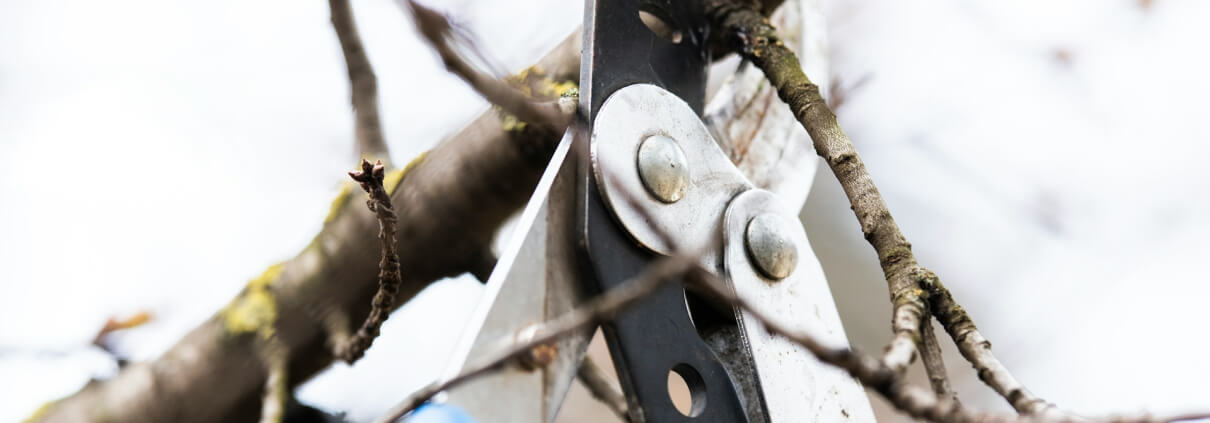Understanding the Right Techniques for Tree Pruning
Pruning trees right can make them healthier, safer, and better-looking. It’s important to know how a tree grows and how its branches work when cutting them. This ensures the tree gets more sunlight and air, promoting better growth.
Using the correct tools matters too. Having the right equipment helps make clean cuts that heal quickly. This can prevent pests and diseases from harming the tree. Knowing which tools to select ensures effective pruning.
Timing is a crucial part of pruning. Doing it at the right season helps the tree recover faster and stay strong. Different trees have different needs, and knowing when to prune enhances their overall health. By understanding these elements, you can care for your trees effectively, keeping your property safe and beautiful.
Understanding Tree Structure and Growth Patterns
Understanding how trees grow and their structure helps in effective pruning. A tree’s structure includes its roots, trunk, branches, and leaves. Each part plays a role in overall health and stability. Knowing how they develop guides you in making the right cuts.
– Roots: They anchor the tree and absorb nutrients. Healthy roots support strong growth. Avoid damaging them when planning structural changes.
– Trunk: The trunk gives the tree support and transports nutrients. Check for signs of decay or cracks before pruning to avoid further stress.
– Branches: Branches should be well-spaced to allow sunlight and air through. Weak or crossing branches often indicate poor health and may need removal.
– Leaves: Leaves show the tree’s health. Yellowing or falling leaves can signal issues such as disease or water imbalance.
Recognising growth patterns lets you anticipate how pruning affects the rest of the tree. For example, cutting branches back to the nearest healthy lateral branch influences their growth direction, maintaining balance. Remember to tailor pruning techniques to fit each tree’s unique shape and needs.
Selecting the Right Tools for Effective Pruning
Using the right tools makes pruning efficient and safe. Different pruning tasks require specific tools. Choosing the right one ensures clean cuts, which help trees heal faster and remain healthy.
1. Pruning Shears: Ideal for small branches and twigs. They’re perfect for quick, clean cuts on thin limbs, usually up to 2 cm thick.
2. Loppers: These are larger than shears and have long handles for extra leverage. Use them for medium-sized branches up to 5 cm thick, giving you more reach and power.
3. Pruning Saws: Designed for thicker branches that shears and loppers can’t handle. They make quick work of branches up to 10 cm and more, so they’re great for larger limbs.
4. Pole Pruners: Used for pruning high branches without a ladder. They offer safety and reach, crucial for tall trees needing trimming.
5. Chainsaws: Reserved for large branches and heavy-duty work. Only use when necessary and if you’re experienced due to their power and size.
Proper maintenance of your tools is essential. Keep blades sharp for cleaner cuts and disinfect them to prevent spreading disease between trees. The right tools, combined with good practice, result in healthier trees and effective pruning outcomes.
Implementing Proper Pruning Cuts and Techniques
Pruning trees correctly is crucial for their health and growth. Knowing where and how to make cuts helps trees heal well and encourages robust new growth. There are key techniques to keep in mind:
1. Cut on the Branch Collar: This is where the branch joins the trunk or a larger branch. Cutting here helps wounds heal naturally and protects the tree from diseases.
2. Avoid Topping: Topping involves cutting branches at random points, which damages the tree’s structure and health. Instead, aim to retain the tree’s natural shape.
3. Thinning: Remove selective branches to increase light and air circulation throughout the tree. This method keeps the tree healthy and strong.
4. Heading: Cut back to a lateral bud to encourage branching and a fuller look. This helps maintain shape without over-pruning.
5. Deadwood Removal: Safely remove dead or diseased branches first. This not only improves the tree’s appearance but also prevents disease spread.
Making precise cuts with the correct technique helps your tree manage energy efficiently. Always consider the tree’s age, species, and condition when deciding on the best pruning strategy. This way, trees continue to thrive and grow beautifully.
Timing Your Pruning for Optimal Tree Health
Choosing the right time to prune is essential for healthy trees. Different trees have ideal pruning times based on their growth cycles and the desired outcome.
– Late Winter or Early Spring: This is the best time for most trees. Pruning during dormancy allows for vigorous growth in the spring as the tree heals more quickly.
– Summer Pruning: Prune after the seasonal growth but before intense heat. This is useful for managing size and removing diseased branches.
– Avoid Autumn: Pruning in autumn can stimulate new growth that may not survive winter, stressing the tree.
– Flowering Trees: Prune these types after they bloom. Doing so preserves the beautiful blooms for the next season.
Timing can affect how well a tree recovers and grows. Experimenting with different seasons may reveal the best practices for your specific trees. Understanding these cycles ensures that pruning efforts maximise the health and aesthetic of your trees.
Conclusion
Pruning trees with the right techniques ensures their long-term health and beauty. By understanding a tree’s structure and selecting appropriate tools, you lay a strong foundation for effective care. Implementing the correct cuts and choosing the right time boosts growth and minimises stress. Pay attention to each tree’s unique needs and adjust your approach as required. Regular monitoring will also help in making timely adjustments, fostering a thriving environment in your yard.
When your trees need professional care, consider TPS Tree Services for your pruning needs. Our team can help maintain the health and beauty of your outdoor spaces with expertise and care tailored to your trees. Whether it’s tackling storm damage or tree pruning in Brisbane, reach out to TPS Tree Services and let us give your trees the attention they deserve.




